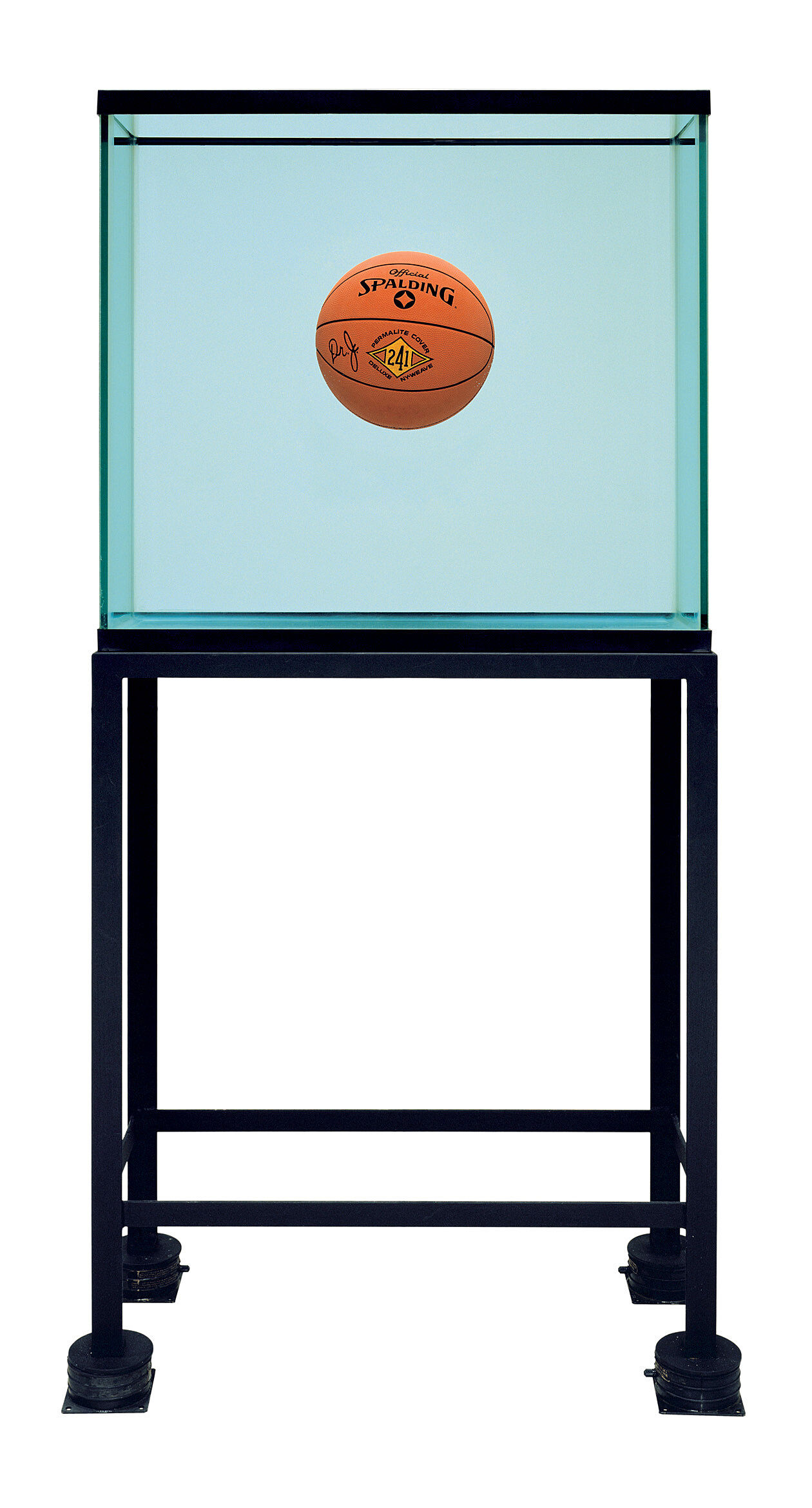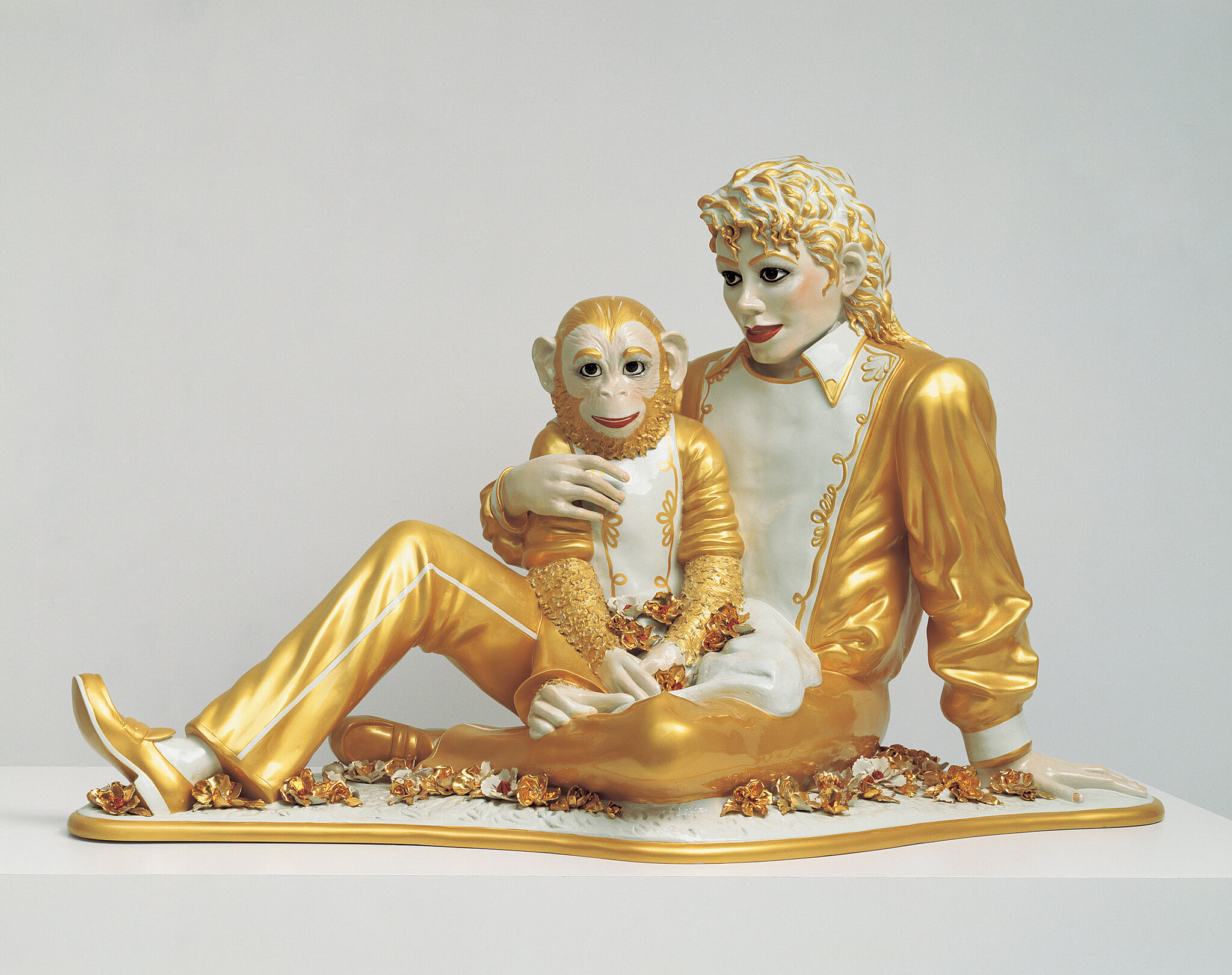Icons
Research and discuss icons
Koons’s 1985 exhibition Equilibrium in the East Village featured posters and sculptures on the subject of basketball—an icon of contemporary popular culture whose stars Koons saw as “sirens” beckoning young people (especially African Americans) with the promise of social mobility through sports and shoes.
Ask your students to explore what an icon is. They could research its meaning on the internet or in dictionaries. Then view and discuss Koons’s work One Ball Total Equilibrium Tank (Spalding Dr. J 241 Series), 1985. Why do students think Koons chose to display a basketball in this way? Discuss what basketballs and basketball stars might represent in our culture. How might they be seen as contemporary icons?
a. For Michael Jackson and Bubbles, 1988 Koons transformed a famous photograph of the late pop star Michael Jackson and his pet chimpanzee, Bubbles into a sculpture. This work, part of a series of sculptures that Koons titled Banality, was intended to speak to a broad audience by using familiar figures like Michael Jackson, Buster Keaton, and the Pink Panther. Koons used the same triangular configuration in his composition as Michelangelo’s Pietà, suggesting the almost religious fervor that contemporary pop stars inspire, but also the sacrifces that they make to be idolized by their fans.
b. Ask students to view and discuss Michael Jackson and Bubbles, 1988 and compare Koons’s sculpture with Michelangelo’s Pietà (1498–99).
http://www.italianrenaissance.org/michelangelos-pieta/
What statement do students think Koons is making by elevating Michael Jackson to the status of a religious figure?
c. Michael Jackson could also be seen as the most idolized pop star of his time, representing an icon of adoration and sacrifice. Ask students to identify and discuss other current icons or icons in art history. In what ways do they represent historical or contemporary culture in which they were made?
d. When Michael Jackson and Bubbles was made in 1988, Jackson was arguably the most famous entertainer in the world, and Koons admired him, just as the artist’s own celebrity was reaching new heights. “If I could be one other living person,” Koons remarked at the time, “it would probably be Michael Jackson.” If each of your students could be one other living person, who would they choose to be? Why?


